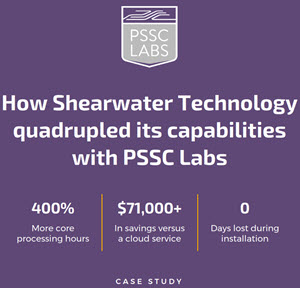The term “personal supercomputer” is a marketing ploy that has been applied to a number of higher performance systems. Apple, for example, advertised its PowerMac G4 (a uniprocessor, no less) in this fashion. However, there are some more legitimate uses of the term. Tyan recently announced its own personal supercomputer under the Typhoon banner; that product contains up to eight dual-core CPUs. These devices are small enough to fit on a desk and are as quite as traditional workstations.
Since most customers in both technical and enterprise areas require only sixteen or thirty-two processors, a full cluster is overkill. In the past, when a department needed this many processors, it either bought a small cluster, or pooled its money with other departments to buy a large one. In either case, the department must manage the cluster, which is usually an arduous task.
A further complication with the large shared clusters is that jobs are submitted to a batch queueing system like PBS. Thus, many cluster customers do not get the benefit of interactivity or immediate execution. That in turn means added difficulty in use.
The promise of “personal supercomputing” is that it will replace small clusters, much as what personal computers did to dumb terminal systems twenty years ago. That is, clusters would be relegated to the large systems for a few particular customers who need hundreds or even thousands of cooperating processors. Whether this will actually happen remains to be seen, but it is an exciting development all the same.



